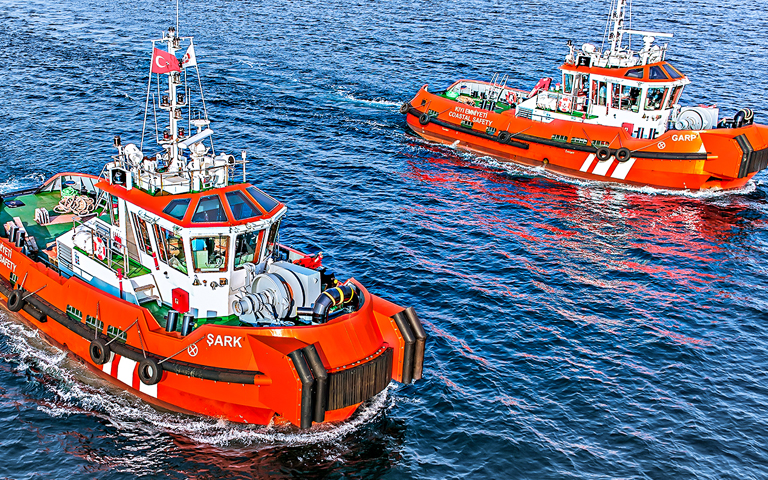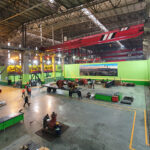
Besiktas Shipyard in Yalova, Turkey, recently delivered to the Directorate General of Coastal Safety two newbuild tugs, the GARP and SARK. These two rugged little tugs are of the TS 2000 class design from Robert Allan Ltd, Naval Architects of Vancouver Canada.
Configured as conventional twin-screw tugs, GARP and SARK are designed to perform ship-assist/ harbour tug duties and construction support. With a significantly low air draft and a shallow navigational draft there are few places inaccessible to these tugs.
The tug was also designed for the maximum speed possible for a tug of this size.
These TS 2000 harbour tugs are classed and built according to Turkish Lloyd notations: [+] 1A5 TUG K20 [+] MAUT
Particulars of the TS 2000 Class Tugs are as follows:
Length O.A.: 20 m
Beam, moulded, extreme: 7.5 m
Depth, moulded (hull): 3.3 m
GARP and SARK have been outfitted to high standards in a compact space for crew of up to 4 people. The lower accommodation deck consists of a combined mess and pantry, two double crew cabins with a shared en-suite.
The wheelhouse is designed for maximum all-round visibility from the forward control station, with conventional helm controls.
Main propulsion comprises a pair of Baudouin M26.2 diesel engines each rated 808 kW at 1900 rpm, and each driving fixed pitched 1.6 m diameter propellers on conventional shaft lines.
The vessels have wet exhausts in order to achieve the extremely low air draft.
The deck machinery comprises a forward hawser winch from Data Hidrolik with a brake capacity of 50 tonnes and a line pull of 25 tonnes at 8 m/min. The aft deck has a 27 tonne SWL tow hook, a 3 tonne capstan and a telescopic deck crane with a 6.5m reach. The bow of the vessel is fitted with push knees and fenders for barge manoeuvring duties.
On trials, the TS 2000 met or exceeded all performance expectations, with the following results:
Bollard Pull, ahead: 24 tonnes
Free running speed, ahead: 11 knots
Free running speed, astern: 7 knots

